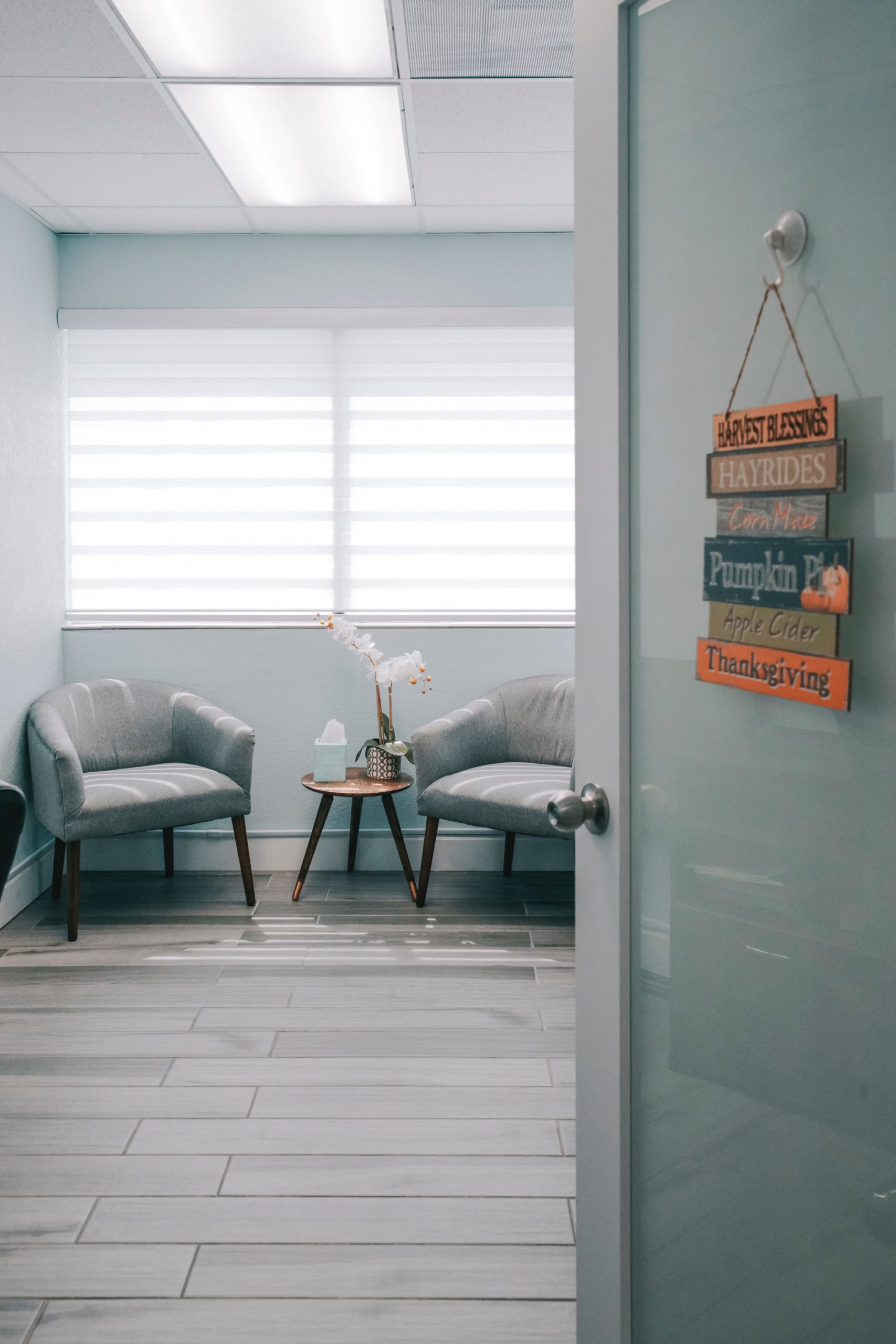The business impact has been profound in the days of “corona.” The financial pressure to reopen is real, and each practice must carefully plan a path back to a new normalcy.
But, strict guidelines must be followed before you reopen your clinic to continue curbing the spread of the virus. Some of these guidelines include:
- New infection control protocols and ways to implement social distancing.
- Switching to safer surfaces
- Reassessing payment options
- Restructuring business to include telehealth and online sources of income.
In this article, we share 8 important points to consider before reopening your practice to make the process as seamless as possible for you, based on CDC protocols.
1. Regulate and Pay Attention to Patient Flow
Before the onset of coronavirus, the patient flow was not something that particularly grabbed most of our attention (e.g., How someone entered your clinic, the places they visited within the practice, and where they exited from were unimportant). But now, the world has morphed.
So before you reopen your practice, let’s review regular patient flow with this example:
Where do patients enter? Where do they then go? For many, it is to the reception desk and then they take a seat in the reception area. Then? They may be called through to the treatment room. Where do they go after that? They might first sit, then move to the table, then lay down. Following treatment, the patient prepares to leave, exits the treatment room, revisits the reception desk, pays, and exits through the same door.

By understanding the patient flow, you can determine points where riskier contact is more likely to occur and implement the appropriate changes.
When making office changes, consider:
- What surfaces are often touched?
- Where does the majority of human contact take place?
- How can you make improvements that lower potential risk?
- How can social distancing be encouraged and implemented?
You can then take these into consideration and plan accordingly.
2. Reduce the Number of Patients in Your Clinic at One Time
We understand that you may have experienced innumerable setbacks in your clinic that may tempt you to make up for it by packing in the patients, but hold one second. It may not be worth it. Close human contact is a serious risk factor for spreading disease. Therefore, it is important that you spread out your appointments so you don’t have a large number of patients in your clinic all at once.
Fewer patients gathering in a small space means less contact through interactions. As we gain greater knowledge, understanding, and fewer cases, you can consider slowly increasing the number of patients you host in your clinic at one time— just stay up to date with the CDC recommendations.
This restart period provides you an opportunity to slow down, focus on a high level of personal attention, engage in deeper discussions about how your patients can improve their wellbeing and prevent illness, and enables you the extra time required for additional cleaning and planning.
Additionally, your revenue doesn’t need to suffer. There are many online channels you can utilize to continue providing your patients with the pain relief they need by offering products online.
To learn more about boosting your business with CBD,
download your FREE E-Book
3. A Move to the Online Space
Have you embraced telehealth? Can your expertise be shared virtually? Could you run online classes or courses?

Some health professions are well suited to telehealth, others less so. Yet, even for manual therapy professionals like chiropractors, osteopaths, physiotherapists, acupuncturists, and massage therapists; there may be elements that work beautifully within the digital space.
If you can consult via telehealth, run virtual classes, or design and deliver online courses, now is the time to consider the practicalities for several reasons.
Working remotely reduces the number of face-to-face consultations and, so, exposure. Patients may embrace this option as safer and more efficient; it eliminates travel time and can give them back much-needed moments.
Also consider selling topical pain-relievers online, without any patient interaction through the new CBD CLINIC™ Share Program. This program allows you your patients to purchase CBD CLINIC products online and have them shipped directly to their homes, while still providing you 50% of the profits!
These options can also provide business security in the future. The coronavirus pandemic has revealed how vulnerable many practices are. If COVID-19 continues to impact us, an already established remote work scenario and digital offerings will buffer the profit losses sustained from the forced closing of practice doors.
Our previous article, How to Benefit Your Business During the Coronavirus Pandemic, provides further insight into the business benefits raised during this time.
4. Infection Control Protocols

As you move towards reopening, create and teach infection control protocols. This means also getting your team on board before patient care resumes. It is your responsibility to provide structure and expectations to team members, patients, and practitioners alike.
The Centers for Disease Control and Prevention (CDC) has repeatedly reinforced the importance of washing hands with soap and water for 20 seconds (although others recommend 60 seconds).
Display signs. Reaffirm the message by instruction and example that hygiene is crucial, and make sure you have hand sanitizer readily available. It is crucial to implement processes that ensure tables, EFTPOS machines, door handles and other repetitively touched surfaces are disinfected with adequate frequency as well.
5. Consider Surface Changes
There are significant differences in how long the coronavirus can survive in the open air.
An article published in The New England Journal of Medicine found that viable COVID-19 was detectable on plastic surfaces 72 hours following exposure and on stainless steel surfaces after 48 hours. No viable virus was detected on cardboard after 24 hours. After 4 hours, copper surfaces showed no signs of live virus.
As you know, providing a safe space for your patients is important, as is providing a healthy work environment for your team. So take a moment to look at your practice, particularly the frequently touched surfaces. Could you switch from plastic chairs, tables, and worktops to a safer option?
6. Awareness and Screening
Moving into the future, each of us has a responsibility to be vigilant. We must prevent unnecessary exposure and protect, particularly, the vulnerable members of our society. Embedding awareness and screening into practice protocols will aid success.
When you open, consider the following extra measures, including:
- Preparing education materials for your patients on COVID-19 symptoms.
- Hanging signs that encourage best hygiene practices
- Encouraging people to contact the practice and reschedule appointments if they believe they may be symptomatic.
- Providing health screenings, including temperature checks. Refer patients for COVID-19 testing, where appropriate.
Patient communication is essential and, as a health professional, there is a duty to share government orders and teach patients how to remain well.
7. Reassess Payment Options

Bills and coins have surfaces that are frequently in contact with human hands, a common potential point of viral sharing.
While many practices have previously relied on cash and checks, the coronavirus pandemic has opened many eyes to the world of digital payment.
Depending on your profession and relevant laws, options like Apple Pay, Google Pay, PayPal or Stripe, can provide alternative, contactless ways to collect payment for your services.
8. Consider Available Financial Support
The federal government and certain cities have acknowledged that the coronavirus business impact has been profound. Many businesses need support.
This led to the creation of the Families First Coronavirus Response Act, a federal policy that provides small to medium American businesses with up to 500 employees the “funds to provide employees with paid leave, either for the employee’s own health needs or to care for family members.”
States and cities are also providing emergency finance, grants and low-interest business loans. Learn more in this article posted on the US Chamber of Commerce’s website, A State-by-State Guide to Coronavirus Financial Assistance.
Additionally, ensure you claim all the small business tax deductions you qualify for. These include advertising and continuing education, insurance and professional association fees, and more.
6. Reopen Your Practice Safely
While the coronavirus has pushed many practices to the edge, reopening sensibly and safely is paramount. Infection control protocols, social distancing, hand hygiene, and screening are necessary.
Reimagining your future and the use of digital options is empowering. Take time to carefully plan your path back to the new normal.
Want to get more business tips and connect with other healthcare professionals?
You are invited to join our community on Facebook, Instagram, Twitter, and LinkedIn. If you are a licensed healthcare professional, you are also invited to join our exclusive private group.


